
22 minute read
ASSOCIATIONS IN ACTION
Food-Service Security Annual Conference
The National Food Service Security Council (NFSSC) recently completed its 33rd annual conference at the Hyatt Regency Baltimore, August 5 – 8, with more than 250 attendees and 65 vendors exhibiting products and services aimed at keeping restaurant workplaces safe and secure.
The event was highlighted by executive keynotes from Charlie Strong, U.S. division president of McOpCo, and Bill Boddie, president and CEO of Boddie Noell Enterprises. Strong spoke to the importance of loss prevention professionals in the quick-service restaurant industry and specifically noted the role of LP in the success of all McDonald’s operations. “Without the efforts of professionals in this room,” stated Strong, “McDonald’s could not continue to move forward with confidence.”
Boddie’s remarks focused on the importance of helping employees succeed, and the role that LP plays with this effort. “We empower our people to make decisions and to help others make good choices,” stated Boddie, whose North Carolina-based company runs multiple restaurants, including Hardee’s, Café Carolina & Bakery, Texas Steakhouse, Moe’s Southwest Grill, and others.
Industry leaders presented on a number of key topics, including identity theft, credit card and gift card fraud, guns in the workplace, social media and the impact on restaurants, mobile commerce in the restaurant,crime prevention networks, exception-based reporting, and smart safes among other topics. Many of the sessions can be viewed at the association’s website, NFSSC.com.
LP and risk management professionals who attended the event expressed appreciation for the quality of the agenda and networking opportunities. “This was my first conference with NFSSC and comparing it to other related conferences, this event offered excellent value with its restaurant-specific educational sessions,” noted Anne Sullivan, director of loss prevention for CKE Restaurants, which owns, operates, and franchises restaurant brands Carl’s Jr., Hardee’s, Green Burrito, and Red Burrito.
“It’s important that we provide an opportunity for all our members to make themselves better professionals and better practitioners,” added James Brussow of Dave & Buster’s, and newly installed president of the association. “The NFSSC annual meeting provides education and networking in a truly unique atmosphere. We have worked hard to create an environment where both members and vendors can engage, exchange, and learn from each other. I believe that is what makes this meeting successful.”
“As a person who spent the bulk of my life in the restaurant industry, I found the purpose of the group and interactions to be the most refreshing of any such association,” said Ted Whitaker, executive vice president of Identity Stronghold.
As executive director of the association, we are extremely excited about the continued growth of NFSSC and the annual conference. This is the fourth consecutive year of double-digit growth for our meeting, and it really underlies the quality education we offer through a number of exciting speakers. Education is the key to our organization and our community.
Other activities at the conference included the introduction of the 2013 board of directors, led by Brussow. Other board members include Winston Griffin of McDonald’s, Chris Manning from Wendy’s, Ted Polensky of Boddie Noell Enterprises, Joe Verber from Taco Bell, and Vince Vittatoe with Bob Evans Farms.
Through the efforts of the NFSSC member and vendor participants at the meeting, a check for more than $3,000 was donated to the Maryland Food Bank, a member of the Feeding America program.
Next year’s annual meeting will be held August 4 – 7, 2013, at the new M Resort Spa Casino in Las Vegas, Nevada. For more information about NFSSC membership and activities, visit the association’s website, NFSSC.com.
Forlenza is executive director of the National Food Service Security Council (NFSSC), an association that brings together loss prevention, security, and risk management professionals from the major casual-dining, quick-service restaurant, and food-service chains for educational networking, benchmarking, and professional development opportunities. NFSSC members include most of the twenty largest U.S. quick-serve chain restaurants. Forlenza can be reached at 240-252-5542 or jim.forlenza@nfssc.com.
Bill Boddie, president and CEO of Boddie Noell Enterprises, spoke to NFSSC conference attendees about helping employees succeed.
FEATURE
YOU CAN STEAL IT, BUT YOU CAN’T USE IT

Moving Toward Benefit-Denial Technology
By Read Hayes, Ph.D., CPP
Regardless of the protective progress retailers and solutions providers are making, thieves are still carrying off billions of dollars’ worth of goods annually. While merchandise loss costs retailers huge amounts of money, theft-driven product out-of-stocks, and sometimes locked up goods, it also deters sales to good customers. Happy, buying customers are the lifeblood of retailing. And tragically, many theft attempts create violence, injuries, and crippling “avoidance behavior” by good customers from the fear of crime. Naturally retail loss prevention executives continue to seek more impactful countermeasures.
Evidence-Based Practice
In the very recent past many loss prevention decision makers based their protective strategies and actions on anecdote, gut feeling, and comparisons with other retail companies. But increasingly LP executives are moving to the evidence-based model favored by medical and other high-risk disciplines. Gut feelings can be accurate, but crime and loss, particularly life safety, is too important to be tackled without using good, focused crime prevention tools supported by extensive and rigorous scientific evidence.
Predictive modeling, offender interviewing, and randomized field experiments provide that needed evidence. Sound research-supported theory should support the “how to” for best business practices. Good theory is practical, not guesswork. Theory is simply an explanation about how things work; there really is nothing more practical than a good theory.
Crime prevention theory is a work in progress, but basically explains how criminals come into contact with desirable, vulnerable targets, and how they tend to behave in differing situations and environments. Theory provides practitioners with the tools to better prevent, discover, and solve crime events. Theory describes how crime prevention tools actually work to affect offender behavior—in other words their “mechanism of action.” Situational crime prevention is probably the most useful and empirically supported prevention theory or toolkit that crime and loss control executives have.
Rational Choice
Most professional disciplines have research-backed guiding principles. Security and loss prevention professionals require similar support to help practitioners more accurately diagnose problems, as well as describe and deploy appropriate crime prevention treatments. Criminology’s rational choice perspective or theory provides much of what is needed by spelling out how criminals make semi-rational choices about what, where, and how to offend based on opportunities as well as perceived personal risks and rewards. Each person has differing genetic makeups, self-control levels, and social learning experiences. But regardless of these background factors, foreground factors, such as the built and social environment; movement and travel patterns for work, shopping, and recreation; and socialization, also shape behavior in both positive and negative ways.
Pretty much everything an individual does is the result of a choice. We do have free will, and deciding to be deviant or to commit a certain crime is a choice, regardless of different biological and social backgrounds. Rational choice theory describes this process so we can shape our deterrent measures.
Consider a potential offender walking into a store to steal something. Their heart rate may be up, they may be in a hurry, they may be high, they may not be the brightest intellect around, and they probably tend to underestimate risk or over value rewards like money or peer praise. All of these factors constrain or negatively affect judgment. But they make rational calculations—thus rational choice. Their decisions may not be totally rational, but their decision process has the elements of a rational calculation. They consider opportunity, personal risk, and, of course, personal rewards when choosing what, why, and how to steal.
Situational crime prevention is designed to consider each factor offenders look at, and then precisely shape perceptions and reality. The current array of these deterrent measures is compiled in the Situational Crime Prevention matrix described below.
Situational Crime Prevention
Each type and subtype of crime is subtly different, as is each location, meaning crime prevention efforts should be precisely focused on the situation at hand. This is the basis for Professors Derek Cornish and Ronald Clarkes’ situational crime prevention (SCP) toolkit.
SCP spells out how practitioners should use a diagnostic process like criminologists’ John Eck and William Spellman’s SARA
Situational Crime Prevention Matrix
Increase the Effort Increase the Risks Reduce the Rewards Reduce Provocations Remove Excuses
1. Target harden 6. Extend guardianship 11. Conceal targets 16. Reduce frustrations and stress 21. Set rules 2. Control access to facilities 7. Assist natural surveillance 12. Remove targets 17. Avoid disputes 22. Post instructions 3. Screen exits 8. Reduce anonymity 13. Identify property 18. Reduce emotional arousal 23. Alert conscience 4. Deflect offenders 9. Utilize place managers 14. Disrupt markets 19. Neutralize peer pressure 24. Assist compliance 5. Control tools/ weapons 10. Strengthen formal surveillance 15. Deny benefits 20. Discourage imitation 25. Control drugs and alcohol
Source: Adapted from Cornish and Clarke (2003: 90).
(scanning, analysis, response, and assessment) model to precisely define a problem, such as commercial armed robbery of a pharmacy for pain drugs versus robbing departing customers in a parking lot. Both are robberies, but each is very different as far as offender motives as well as the hunting, attack, and commission styles. And like evidence-based medical treatments, cost-efficient crime prevention treatments are made possible by detailing situational crime problems.
Once the crime event problem is thoroughly described, executives apply indicated SCP techniques. The primary SCP techniques involve making crime attempts more difficult, more risky, and less rewarding. To be effective, preventive interventions don’t have to perfect, or even for real, they just have to convince would-be criminals that theft attempts are too much work, too risky, or not worth it. After deployment, crime prevention interventions are rigorously evaluated to determine their real-world impact and cost benefits.
Benefit Denial Defined
Much of the University of Florida’s Crime Prevention Research Team and the Loss Prevention Research Council’s research team’s efforts are directed at developing and rigorously field testing highly focused crime prevention interventions using the SARA and SCP process. We’re looking at various ways people, programs, and systems are best deployed to deter offenders by increasing their crime effort, making them feel much more at risk of detection and response, and by helping them sense their contemplated crime attempt will not be rewarding enough.
Our research methods include systematic offender interviews in commercial spaces and places to get their perspectives. We want to understand what interventions they see (see it), if they can explain how they work (get it), and how their behavior has been or might
“Benefit-denial technology has the potential to positively impact losses throughout the entire supply chain, making products useless unless legitimately purchased. The technology could dramatically change the way retail thinks about everything from shipping to back stock to display. It could drive benefits in transportation costs, insurance, shrink, and ultimately customer costs.”

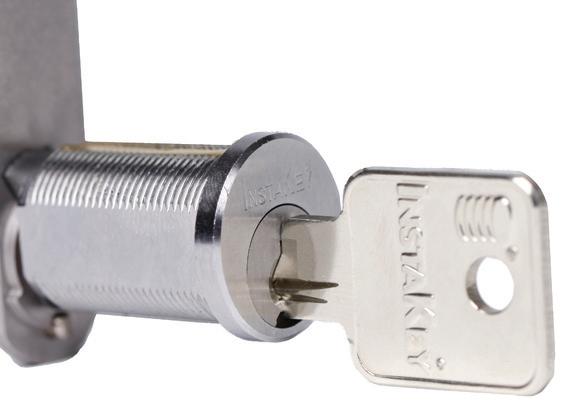
be affected by them (fear it). The see it, get it, and fear it factors are essential to deterence.
We then make ongoing innovations and adjustments for real-world field evaluation. Our evaluations are usually randomized controlled trials (RCTs) in order to compare crime event or loss levels before and after in test locations compared to non-test control places. RCTs not only provide rigorous impact measurement, but cost-benefit estimates as well.
Our teams also examine how long and why it takes crime prevention treatments to reach “therapeutic” levels, peak, and then to lose steam. Critical questions include: ■ What are the best dosage levels, for example, how many camera domes, and ■ What are the optimum deployment tactics, such as best heights, placement, signage, and other factors?
We have to better understand why some crime prevention treatments work better in some spots than others. Like medications, crime prevention treatments have varying effects in different locations and on different people. We want to identify and address those critical risk and protective factors that affect differential impact to make impact improvements.
Loss prevention practitioners already deploy protective singular and combined techniques to make crime attempts riskier or more difficult. When it comes to making offenders think their contemplated crime act would be too risky, practitioners use many of the following techniques: ■ Employee awareness campaigns, ■ Guards, ■ Store detectives, ■ Lighting, ■ Reporting hotlines, ■ Transactional approval procedures, ■ Exception reporting, ■ EAS, ■ Burglar alarms, ■ Spider wraps, and ■ Safers or Keepers to name a few.
Physical barriers, locks, combinations, passwords, cabling, limiting curb cuts, and numerous other tactics increase crime effort. But since crime levels remain at unacceptable levels, loss prevention managers need more tools. And making crime attempts less rewarding is where benefit denial comes into play.
Benefit Denial’s Background
Retailers adopted ink or dye tags from Sweden in the late 1980s to protect apparel merchandise, heralding the first known use of benefit denial devices in the U.S. In 1989 the author created the term “benefit denial” when Bob DiLonardo, then of Security Tag, which was later purchased by Sensormatic/ADT/Tyco, requested a term to describe what and how ink tags, and other newly developed metal clamps for eyewear, wallets, earrings, and other jewelry, functioned to reduce theft.
Benefit denial seemed to succinctly describe the protective “mechanism of action” that essentially is defined as: stolen goods protected with benefit denial will not benefit the stealer since the goods will not work unless purchased.
For example, illicit removal of ink tags results in the spraying of dye on the protected garment, thus reducing self-use or conversion to cash. Similarly, the metal clamps damage the items enough to deny thieves and fences any benefit unless removed as part of a purchase.
Retailers and security technology companies adopted the benefit-denial term. Likewise, Professor Clarke placed the benefit-denial concept into the rapidly evolving situational crime prevention matrix so criminologists and practitioners would be able to further develop and test this relatively new crime prevention concept.
Other more contemporary benefit-denial techniques include cell phones that don’t work until being activated after purchase, car stereos that don’t function if the faceplate is removed, and…an oft-cited example…special hotel hangers with very small hooks or small ball tops that require special racks. In this low-tech example,
continued on page 44
Benefit Denial to Be Featured at October Workshop
The 8th Annual Impact Workshop of the Loss Prevention Research Council will be held October 15 – 17 on the University of Florida campus in Gainesville. Over a hundred retail LP and vendor executives will gather to hear results of recent research as well as discuss emerging technologies and future research. Following are some of the highlights of the agenda: ■ Leadership panel on innovation featuring
John Voytilla, OfficeMax; Brand Elverston,
Walmart; Dr. Richard Hollinger and Dr.
Steve Kirn, University of Florida; and Ned
McCauley, Tyco Integrated Security. ■ Benefit denial, packaging innovation, predictive
analytics, and video analytics working group
sessions with Shannon Hunter, OfficeMax;
Tim Fisher, Best Buy; Carlos Bacelis, Sears
Holdings; and Ahmad Lightfoot, T.J.Maxx. ■ Digital journey presentation and roundtable discussions with Don Burkett,
Sears Holdings; Ed Weiser, Motorola; and Katie Freiday, The Home Depot. ■ New challenges in loss prevention roundtable discussions on best practices in talent recruitment and development and customer attitudes toward
LP facilitated by Danny Sorrells, Walmart. ■ Recent LPRC research results on predictive analytics, open access, and other field research. ■ StoreLab mock-up environment with offenders discussing perceptions of theftdeterrent solutions and tactics. All retailers are invited to attend this workshop. Visit the magazine website, LPportal.com, or the LPRC website, LPresearch.org, for more information, or call or email Corrie Tallman at 352-222-8202, ctallman@LPresearch.org to register.
AXIS M1014 Network Camera Surveillance Kit!
Are you sure you want to permanently erase these items?
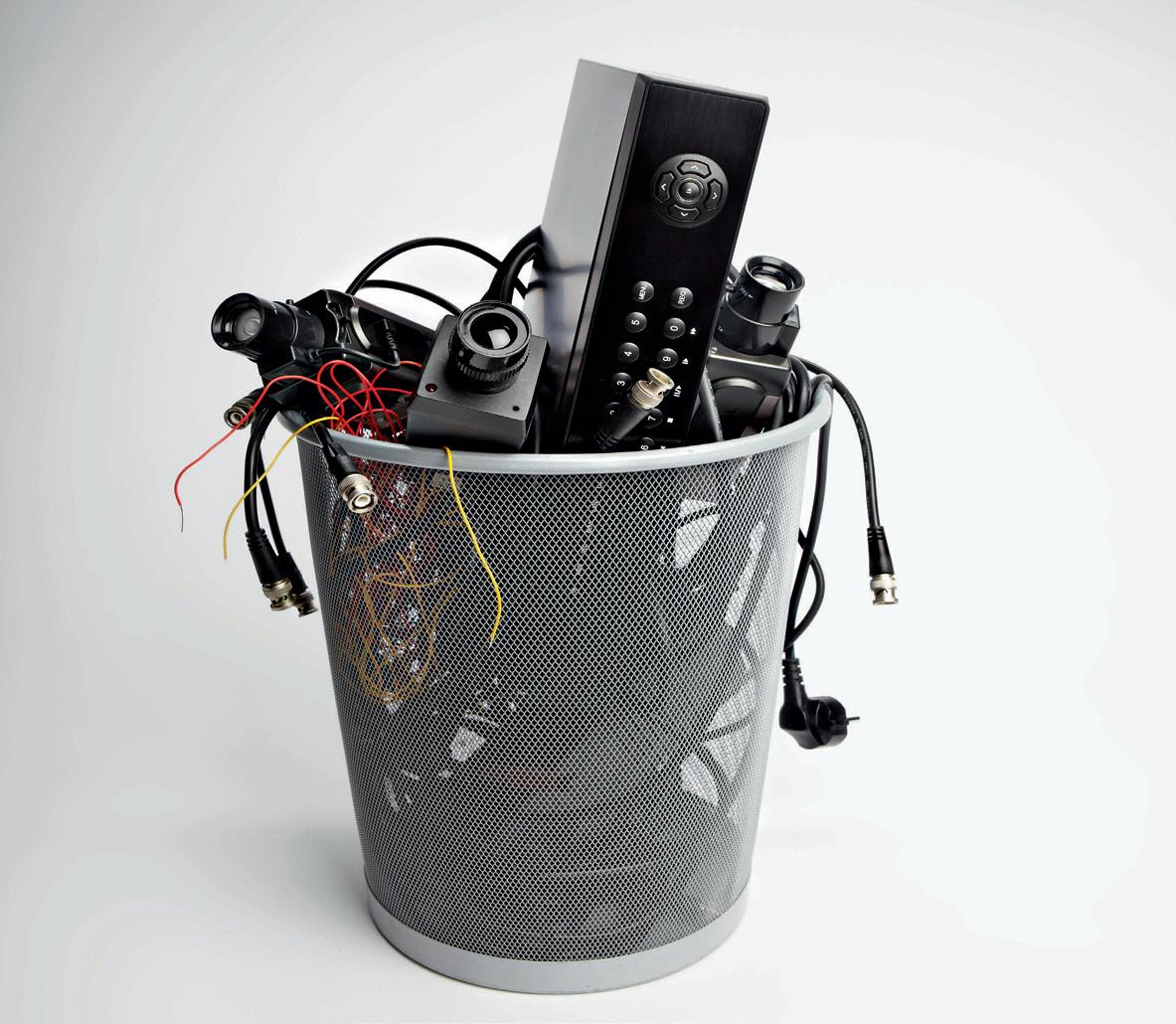
Yes No

Read more with your smartphone It’s time your video surveillance was as smart and easy as your other tech gadgets, don’t you think?
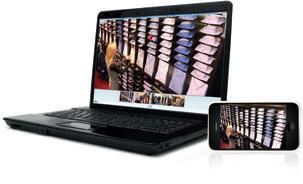
As a small-business owner today, you have some pretty cool technology available — everything from working on the go with laptops to video conferencing with a smartphone. So when it comes to video surveillance, you should expect to have something equally smart that fits your needs and budget. Now, you can. Perfect for retail stores, hotels and other small businesses, AXIS Camera Companion offers you benefits like HDTV quality and remote viewing. AXIS Camera Companion records all video on each camera’s SD-card — so no need for a DVR or even a computer during operation. It’s simple: install it, watch it, interact with it, depend on it.
AXIS Camera Companion — the easiest way to network video surveillance.
Get the Axis picture. Stay one step ahead. Visit www.axis.com/companion
continued from page 42 benefit denial does not make stealing hangers riskier or more difficult; rather they make it less rewarding unless the thief steals the rack as well or sells the hangers to other hotels.
Some retailers now combine benefit denial with the threat of detection (increasing the risk) by combining ink and EAS tags on high-loss clothing items.
The goal of retail is to profitably sell merchandise. The goal of loss prevention is to support that objective in part by creating the ability to sell more while losing less. Open or self-serve merchandise access means more sales and better shopper-retailer relationships.
Increasingly senior retail executives realize theft and the fear of theft by store-level managers drives much of modern retailing. Fearful managers striving for year-end bonuses may tend to lock up, hide, or only put out small quantities of items thereby reducing sales. Benefit-denial technologies hold the promise of much more open selling of even very high-value items.
Going to the Next Level
Recently, leading retail chains have banded together to inspire and facilitate benefit-denial technology development. The Loss Prevention Research Council (LPRC) established a Benefit-Denial Working Group headed by Best Buy’s Tim Fisher and Walmart’s Dain Sutherland. The working group consists of over fifteen retail companies, including Lowe’s, Sterling Jewelers, OfficeMax, CVS/pharmacy, and Sears Holdings; security solution providers such as DiSa and Proteqt; and high-loss product manufacturers Abbott Nutrition and Elizabeth Arden.
“Benefit-denial technology has the potential to positively impact losses throughout the entire supply chain, making products useless unless legitimately purchased,” says Fisher, director of asset protection and safety for Best Buy. “The technology could dramatically change the way retail
“Benefit denial is an example of a more advanced theft-deterrent, merchandise protection strategy for Walmart. Our focus remains to rely less on mechanical gadgets and to aggressively transition to more customer-friendly and effective measures. This allows us to keep key, high-theft, high-sales items accessible to customers without the inconvenience of having to unlock a showcase or other more restrictive measure.”
thinks about everything from shipping to back stock to display. It could drive benefits in transportation costs, insurance, shrink, and ultimately customer costs.”
The group has established a mission statement, objectives, and is setting up small pilots to encourage and adjust benefit-denial solutions for a range of products, including optical disks like Blu-ray DVDs, consumer electronics, printer ink, fragrance bottles, jewelry, power tools, and over-the-counter medications.
The LPRC benefit-denial working group is also looking at developing a descriptive term for public consumption that reflects benefit denial in a more favorable light.
Likewise, the Entertainment Merchants Association (EMA) is leading a group of retailers and electronic media providers, including gaming software developers, movie studios, and music producers, to conduct technical and efficacy testing of benefit-denial technologies in conjunction with the LPRC.
Other benefit-denial development efforts include Elizabeth Arden working with the LPRC and several leading drug and mass retailers, as well as with protective solution providers, to look at including benefit-denial technology into fragrance bottles and/or packaging. Further, the Retail Industry Leaders Association’s (RILA) horizons committee is working to define benefit denial as part of a range of product protection solution concepts for further development.
Current Concepts
Several entrepreneurial companies as well as forward-thinking retailers are working on new benefit-denial approaches to product protection.
Benefit-denial technology developer DiSa Digital Safety has produced a system that can work within or separately from a retailer’s point-of-sale computer infrastructure. The current, but evolving, version renders electronic good such as cell phones, TVs, mp3 players, cameras, and laptops unusable until a legitimate purchase generates a unique code to activate the unit.
Another benefit-denial innovator, ProTeqt Technologies, has fielded a process that employs chemically bonded locks for DVDs, bottle caps, and many other products that lock the item until the purchase process unlocks the item for normal use.
Both organizations are working on benefit-denial products for a wide range of product categories. And no doubt many other developers are working away on other benefit-denial concepts for merchandise and other valuable assets.
Likewise, Walmart has been working on a proprietary benefit-denial technology for electronic merchandise as well that provides for unlocking or enabling a device at the point of sale or providing an unlocking code on a customer’s receipt.
“Benefit denial is an example of a more advanced theft-deterrent, merchandise protection strategy for Walmart,” explains Sutherland, senior manager of asset protection shrink and inventory research. “Our focus remains to rely less on mechanical gadgets and to aggressively transition to more customer-friendly and effective measures. This allows us to keep key, high-theft, high-sales items accessible to customers without the inconvenience of having to unlock a showcase or other more restrictive measure.”
continued from page 44
Benefit-denial technologies and other emerging solutions will need to work with existing countermeasures, such as protective packaging, Keepers and wraps, special pegs and display fixtures, electronic surveillance and notification, RFID, smart and open store layout and design, and a myriad of other technologies and tactics.
These and future benefit-denial technologies will need laboratory and in-store development and testing to make sure they work as advertised, as well as: ■ Don’t interfere with other technologies or electronic signals, ■ Prove durable in demanding retail environments, ■ Are efficient for already over-tasked store employees, ■ Don’t disturb or hinder busy, selective shoppers, ■ Are easily understood and failsafe for customer activation and use, and ■ Prove cost-effective at scale.
Next Steps
As loss prevention and law enforcement move to the evidence-based model, more crime prevention innovations, including benefit-denial concepts, should emerge, truly creating the conditions for selling more while losing less in a safer environment.
Benefit denial is not the total product protection answer for all assets in all places. Many store locations are daily exposed to huge theft risk due to surrounding criminogenic conditions. In other situations managers may be less than competent or not committed to strong, ongoing asset protection efforts. Situations like these will require extra help.
Benefit-denial technologies and other emerging solutions will need to work with existing countermeasures, such as protective packaging, Keepers and wraps, special pegs and display fixtures, electronic surveillance and notification, RFID, smart and open store layout and design, and a myriad of other technologies and tactics.
But at this point, it is encouraging to see that both growing evidence and crime prevention theory all point to the promise of selling more and losing less by making theft less rewarding with benefit-denial technologies.
READ HAYES, Ph.D., CPP is director of the Loss Prevention Research Council and coordinator of the Loss Prevention Research Team at the University of Florida in Gainesville. He can be reached at 321-303-6193 or via email at rhayes@lpresearch.org.
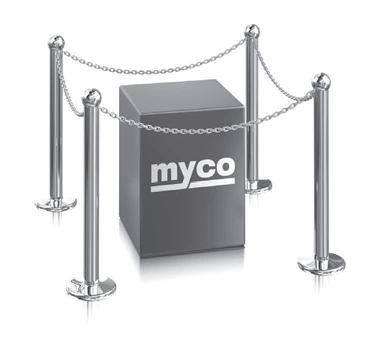
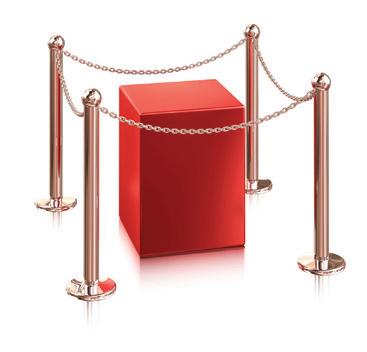
PROTECT YOUR BRAND.
When it comes to civil recovery, how important is brand protection to your company?
At Palmer, Reifler & Associates, we work closely with our retail clients to provide customized legal representation that is right for them. Our team of attorneys is integral to our civil recovery process, ensuring important legal standards and protections, while optimizing recovery performance.
Place your trust in the law firm with a focus on Civil Recovery Law.
ORLANDO | ATLANTA | CHICAGO | DALLAS LOS ANGELES | LONDON | TORONTO Toll-Free in the U.S.: 866.875.6565
P A L M E R R E I F L E R L A W . C O M
TMTM
Multi-Point Exit lockMulti-Point Exit lock
SIMPLY THE BEST! SIMPLY THE BEST!

l l Superior protection against prying Superior protection against prying
Locking bolts located at pry points. 3 horizontal locking points Locking bolts located at pry points. 3 horizontal locking points on lock side & standard one locking bolt on hinge side. on lock side & standard one locking bolt on hinge side.
Delayed Egress Option Now Available! Delayed Egress Option Now Available!
l Bolts project into side of frame l Bolts project into side of frame
Lower bolt does not ham up due to dirt & moisture in the floor. Lower bolt does not ham up due to dirt & moisture in the floor. Upper bolt avoids the need move alarm contacts on Upper bolt avoids the need move alarm contacts on door frame. door frame.
l Self-locking ensures smooth lockingl Self-locking ensures smooth locking
Door automatically relocks when closed. Door automatically relocks when closed.
l Easy installation in under 2 hoursl Easy installation in under 2 hours
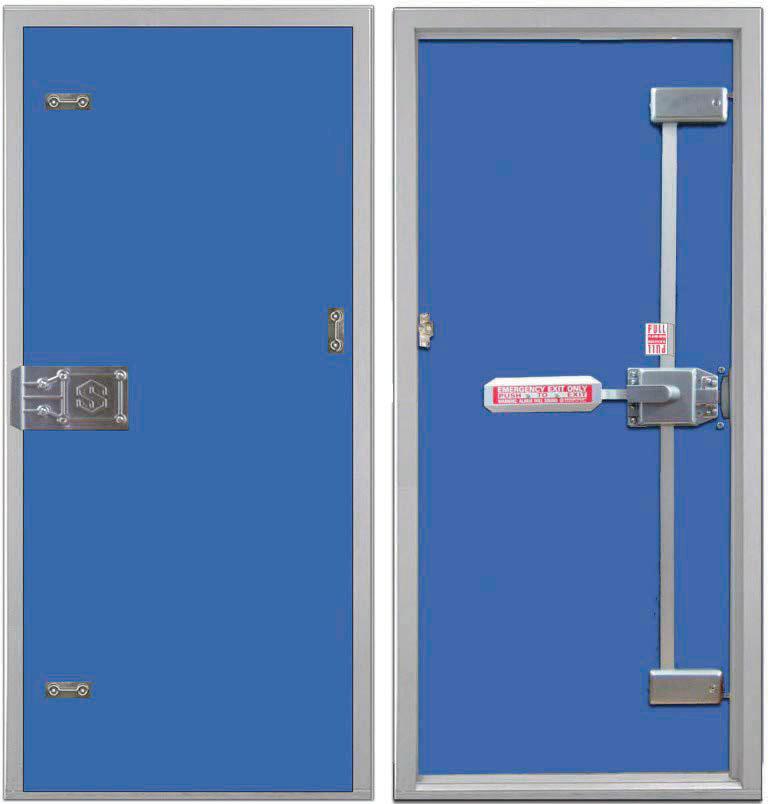
Mark & drill without measuring with patent pending full Mark & drill without measuring with patent pending full size steel template. size steel template.
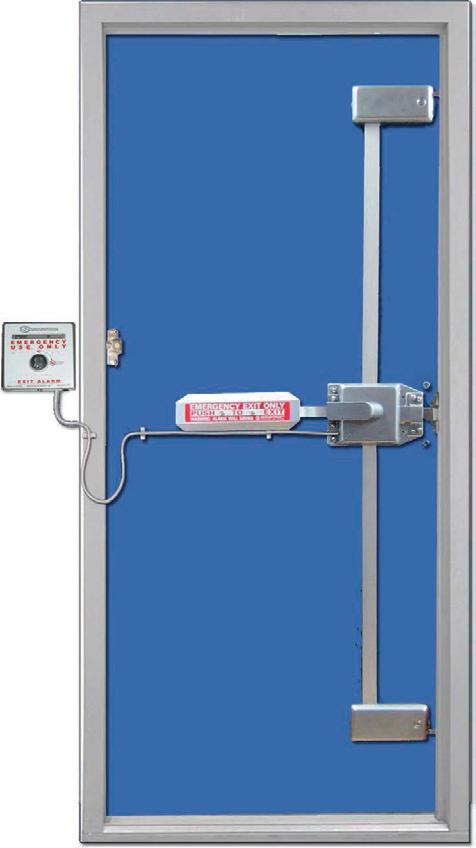
l Supported by a national network of dealersl Supported by a national network of dealers
The Trident Multi-Point Exit Lock has been trusted for The Trident Multi-Point Exit Lock has been trusted for exit door protection for over 5 years. exit door protection for over 5 years.
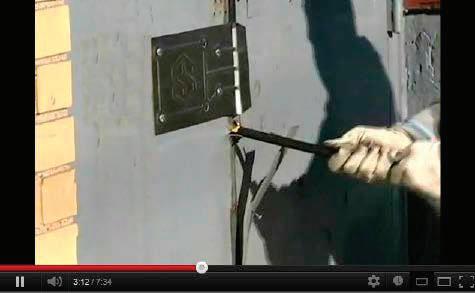
C CheCk Out Our tridentheCk Out Our trident Break-in attempt VideBreak-in attempt VideO!O! www.Securitech.com/SimplyTheBest www.Securitech.com/SimplyTheBest
Take It From The Pro’s! Take It From The Pro’s!
Locksmith:Locksmith:
Fire Marshal:Fire Marshal:

LP Director:LP Director:
”...superb security comes from ”...superb security comes from the automatic high security the automatic high security relocking provided in the relocking provided in the self locking Trident lock...” self locking Trident lock...”






